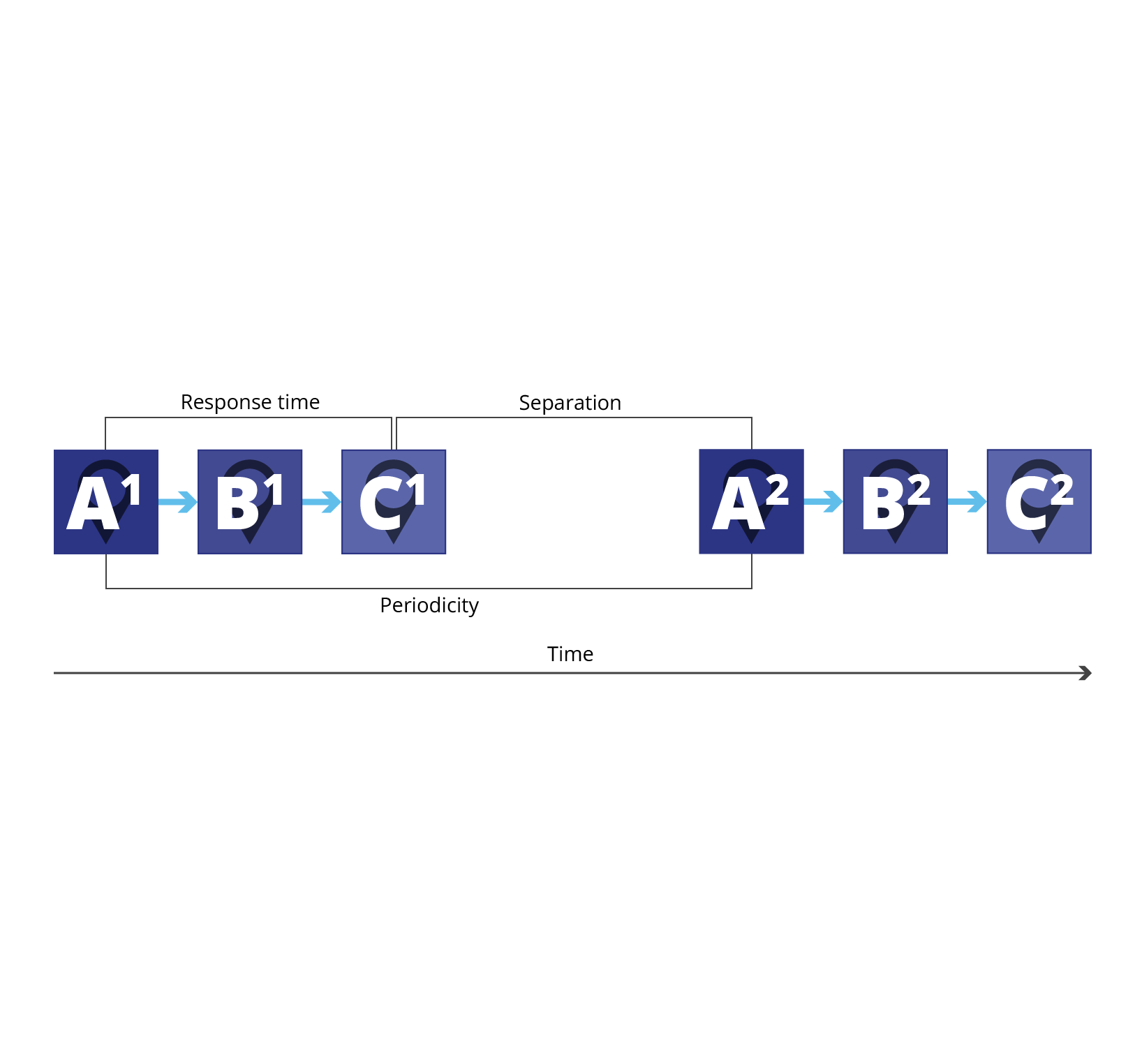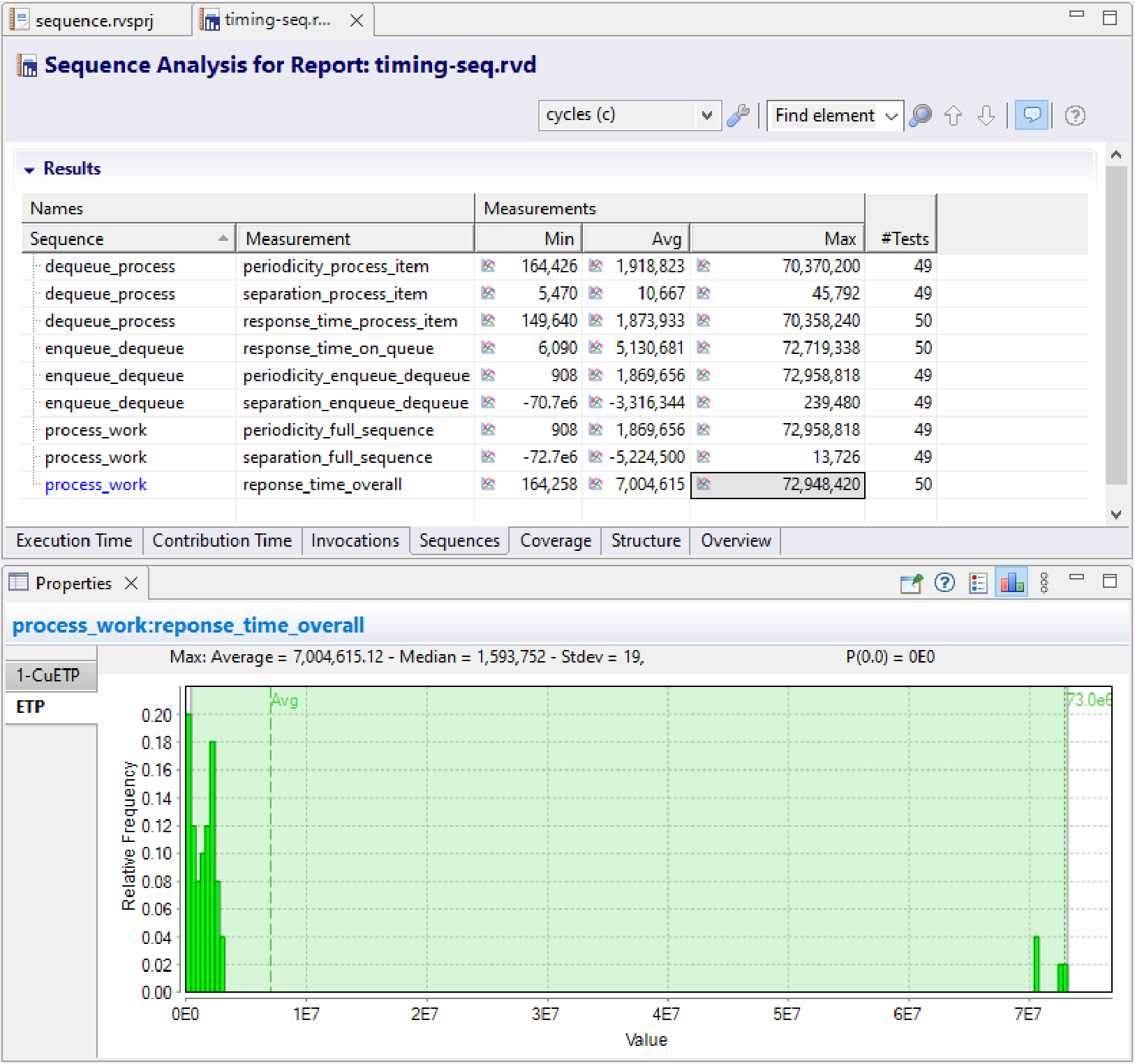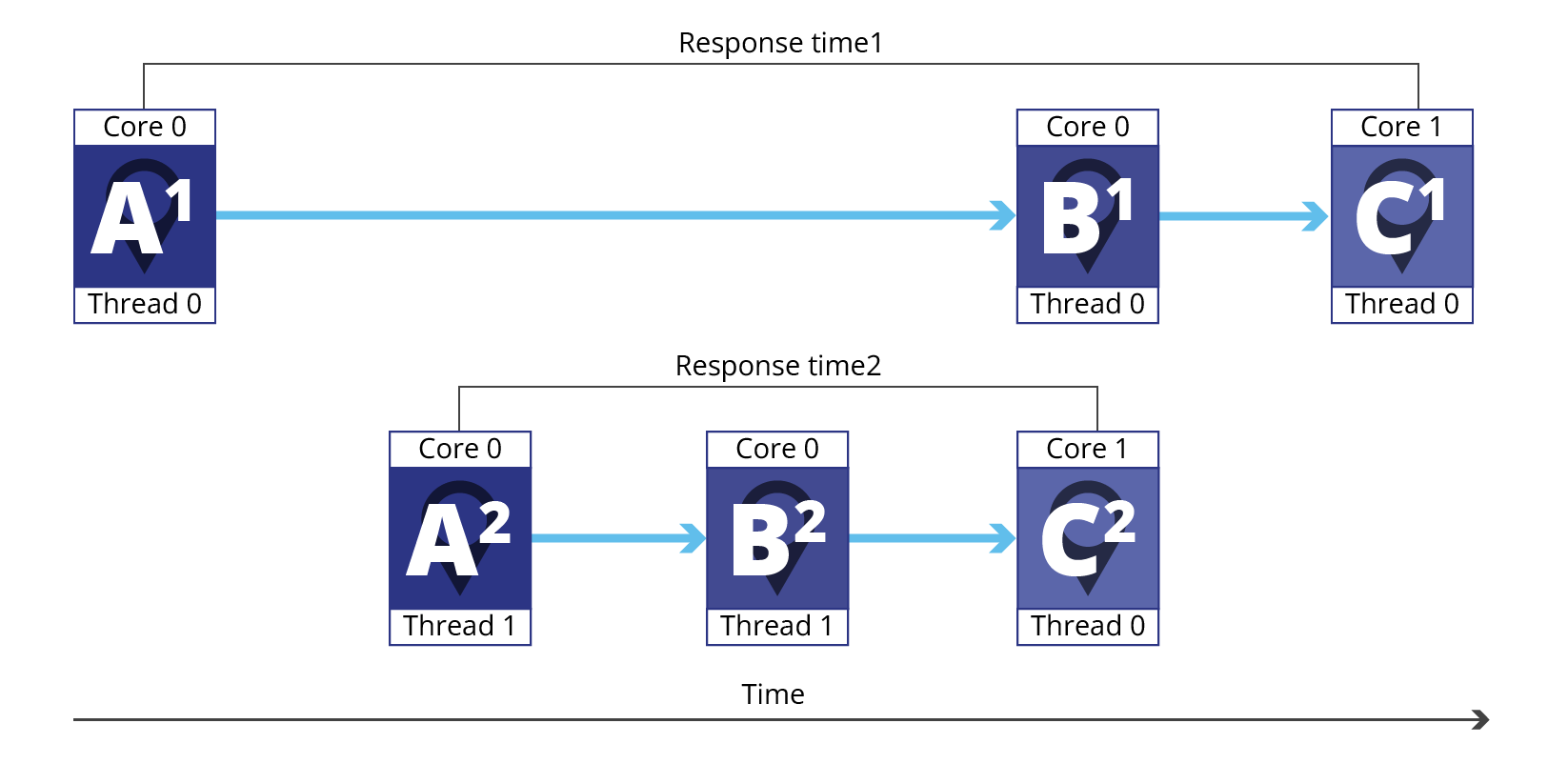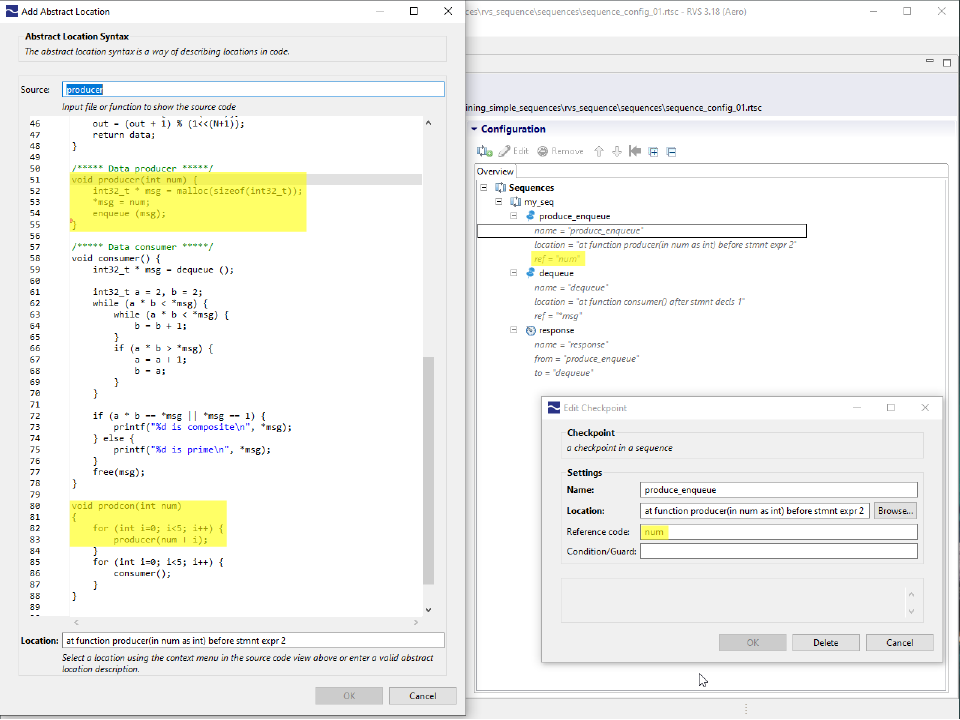Analysis of the timing behavior of avionics software helps avoid errors such as timing overruns and is needed to support DO-178C certification.
While many timing requirements relate to the worst-case execution time of software, some may relate to other metrics such as response time, periodicity of execution, or separation between different instances of a sequence running.
Execution time vs. response time
The execution time of a piece of software is the time taken for a task to finish, ignoring time spent executing other functions or interrupts.
The response time of a piece of software is the total time taken for a task to finish, including time spent executing code in other functions or interrupts.
As of RVS 3.18, RapiTime includes a sequence analysis feature that provides a flexible framework for making these kinds of timing observations. This lets you define sequences of checkpoints within your code across which you want to take measurements. For each sequence, you can define the measurements you want taken, which can be the elapsed time between any two checkpoints within the sequence. After measurements have been defined, RapiTime can instrument your code appropriately, collect the necessary results during software execution, and display these results in your RapiTime report.



This flexible framework also supports multicore timing analysis such as that carried out in our MACH178 solution to meet A(M)C 20-193 objectives for multicore DO-178C projects. Sequence analysis makes it possible to measure end-to-end timing metrics for sequences of events when multiple tasks run simultaneously, even when sequences involve checkpoints executing on different cores (as shown below).

To support analysis in situations where multiple instances of a task may be running simultaneously, we needed to have a way to uniquely attribute checkpoints as belonging to a specific instance of a sequence. We did this by annotating each checkpoint with a sequence reference. When you define a checkpoint, you can supply a snippet of code that returns an integer shared by all checkpoints in the sequence, and is unique to each instantiation of the sequence. When each checkpoint is hit, this code is evaluated and the resulting integer is recorded in the checkpoint. This allows RVS to demultiplex sequences that execute simultaneously, so long as there is a distinguishing integer available.

We're looking forward to see how RVS’s new sequence analysis feature can help you verify your critical software. We’ll be building on the feature to support more complex, non-linear sequences and sequences where no single distinguishing integer reference is available in future RVS versions, stay tuned!
To learn more about sequence analysis, visit our feature page or contact us. For more information on multicore certification, visit our MACH178 page.

 Hybrid electric pioneers, Ascendance, join Rapita Systems Trailblazer Partnership Program
Hybrid electric pioneers, Ascendance, join Rapita Systems Trailblazer Partnership Program
 Magline joins Rapita Trailblazer Partnership Program to support DO-178 Certification
Magline joins Rapita Trailblazer Partnership Program to support DO-178 Certification
 Eve Air Mobility joins Rapita Systems Trailblazer Partnership Program for eVTOL projects
Eve Air Mobility joins Rapita Systems Trailblazer Partnership Program for eVTOL projects
 How to certify multicore processors - what is everyone asking?
How to certify multicore processors - what is everyone asking?
 Data Coupling Basics in DO-178C
Data Coupling Basics in DO-178C
 Control Coupling Basics in DO-178C
Control Coupling Basics in DO-178C
 Components in Data Coupling and Control Coupling
Components in Data Coupling and Control Coupling
 DO-278A Guidance: Introduction to RTCA DO-278 approval
DO-278A Guidance: Introduction to RTCA DO-278 approval
 ISO 26262
ISO 26262
 Data Coupling & Control Coupling
Data Coupling & Control Coupling
 Verifying additional code for DO-178C
Verifying additional code for DO-178C
 DO-178C Multicore In-person Training (Bristol)
DO-178C Multicore In-person Training (Bristol)
 DO-178C Multicore In-person Training (Fort Worth, TX)
DO-178C Multicore In-person Training (Fort Worth, TX)
 DO-178C Multicore In-person Training (Toulouse)
DO-178C Multicore In-person Training (Toulouse)




















